Dark energy and dark flow - how to explain all this?
Peering into this darkness, I stood for a long time, amazed, full of fear and doubt, dreaming in such dreams as no mortal
- Edgar Allan Poe
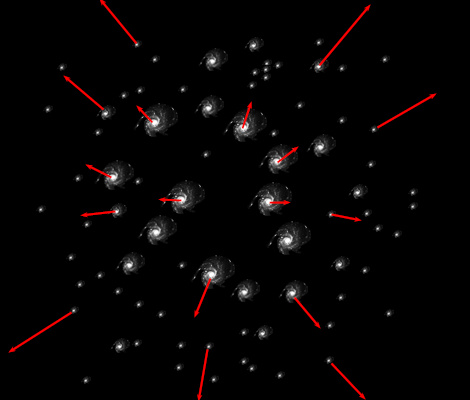
In 2011, the Nobel Prize in Physics was awarded to three scientists for discovering the accelerated expansion of the Universe.
What is the physical meaning of this phenomenon?
')
If a certain initial expansion followed in the Universe, accompanied by universal gravitational attraction, one would expect that the farther the object was removed from you, the smaller its escape rate would become.

With enough matter, the expansion should have lost gravity, and all objects moving away from us today would change their direction of movement and start moving in our direction.
And if it were not enough, the expansion would have won, and the moving objects would slow down, but they would still run away from us for ages.
But if the expansion accelerates, then everything becomes a bit more complicated.
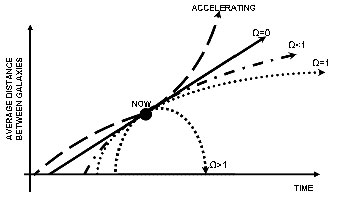
Instead of the three cases of acceleration shown on the graph (when Ω> 0, and the escape rate of any galaxy decreases with time), or even in the case of an empty Universe (Ω = 0, and the escape rate remains constant), in the Universe with accelerating expansion the escape rate of galaxies time grows!
Until the 1990s, it was assumed that the expansion of the Universe was slowing down, and that in order to understand both the history and the fate of the Universe, two important dimensions had to be made.
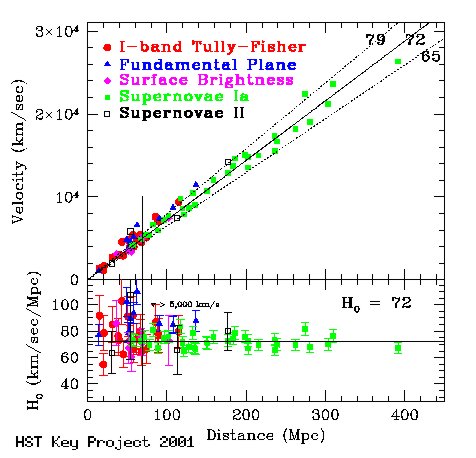
The first is H o , the value of the Hubble constant for today. If the galaxy is at a certain distance from us, it should run away from us at a certain speed determined by the Hubble law . For relatively close objects (galaxies that are not further than a billion light years from us), the accelerating, slowing, or empty Universe looks the same.
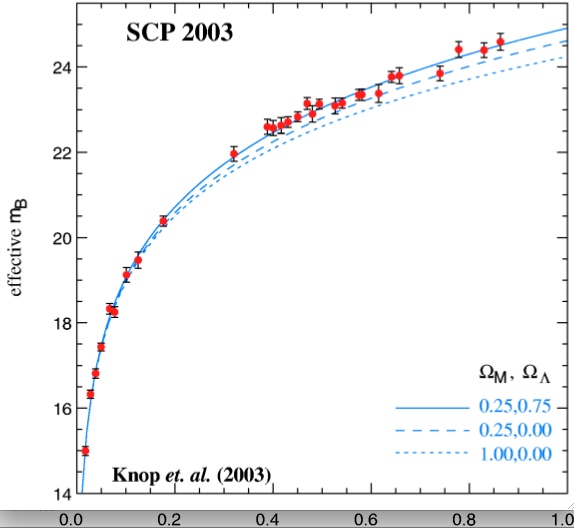
The second important dimension, q o , the deceleration parameter , tells us whether the Universe is accelerating or slowing down, and it is very sensitive to the movement of distant objects. In the picture above, q o = + ½ at the lowest line, q o ≈ +0.1 at the middle line, and q o ≈ -0.6 corresponding to the state of affairs in the real Universe at best. Usually I prefer not to mention exact values, but this is important, so just remember that the parameter q o ≈ -0.6 fits best to our Universe.
A negative value indicates that the Universe does not slow down, but accelerates its expansion! And we learned about it by watching these bright, well-known objects visible at large distances: supernovae!
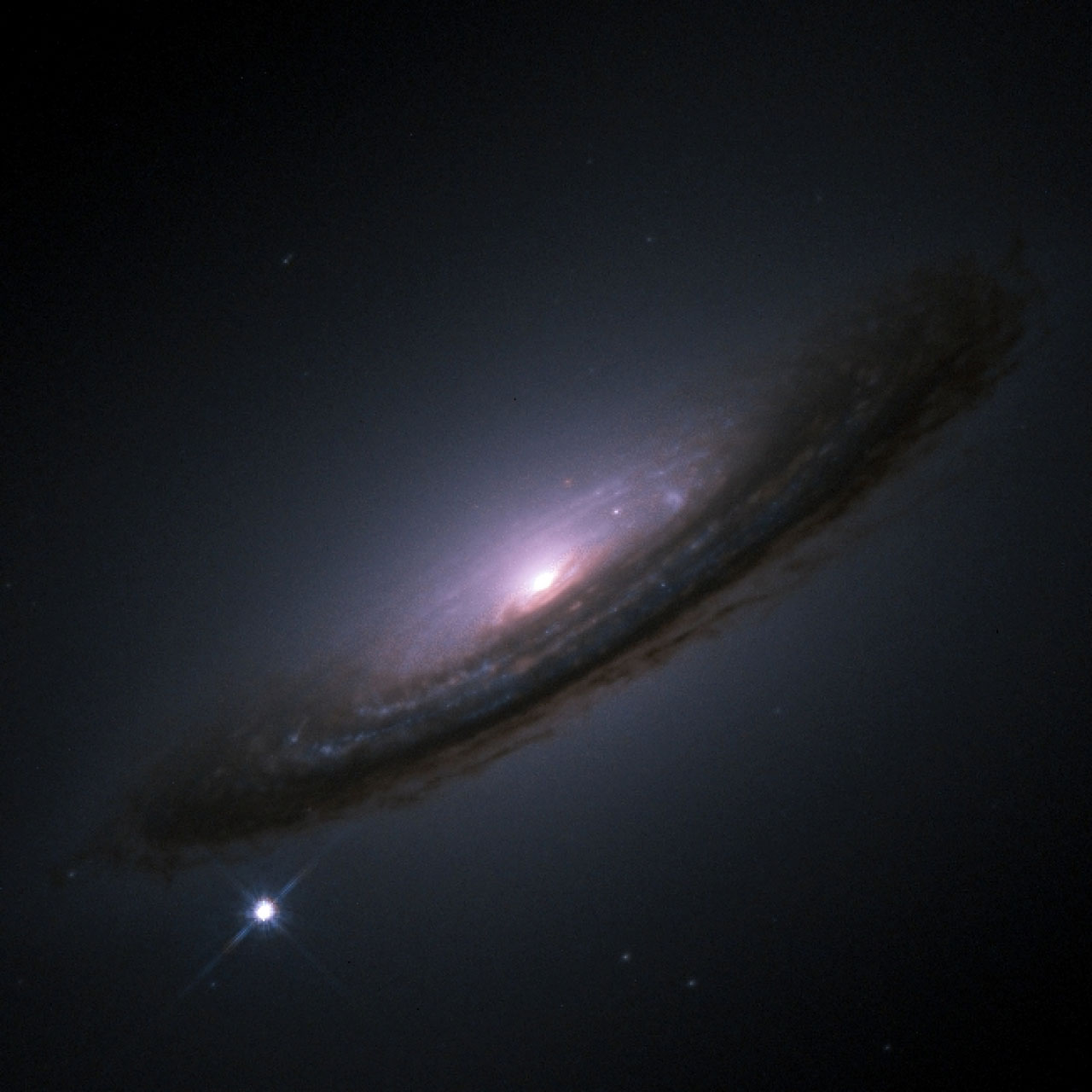
In the past, many attempts have been made to explain observations by something else instead of accelerated expansion, and I have written many articles describing in detail how they failed.
But recently, a new idea has emerged that has received some publicity: something called “dark flow” can lead to the appearance of accelerated expansion!

The cosmologist Christos Tsagas has completed work continuing one of the previous works , noticing something very tricky.
Hubble's law — the relationship between the apparent speed of an object's escape and its distance — is on average satisfied, but it does not predict the speed of any particular object.
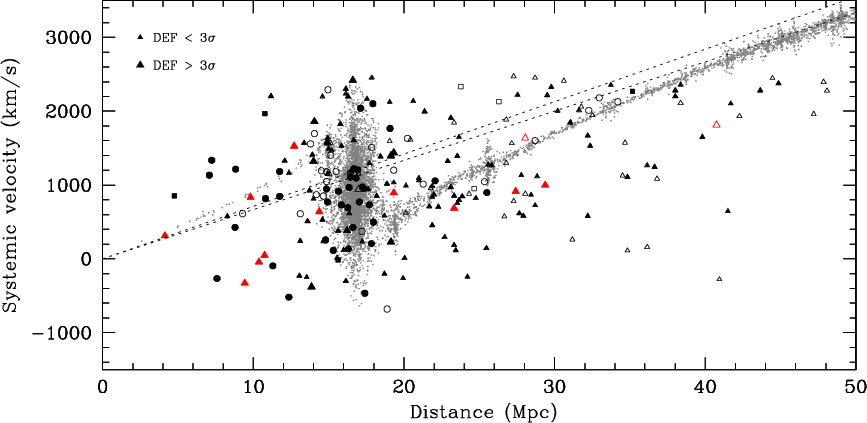
Each object, being captured by the universal expansion of the Universe, is also subject to local gravity, which adds an additional motion over the Hubble expansion, known as peculiar velocity . It is not surprising that we not only observe this, but also receive it in the predictions of various simulations.
It has been repeatedly measured that our galaxy has a peculiar velocity of 627 km / s, which is quite a lot: 2.3 million km per hour! (M dipole anisotropy ).

This dipole does not accurately describe our peculiar velocity. They must be connected, but since the Earth revolves around the Sun, the Sun around the Galaxy, and all other galaxies act on the Galaxy, this peculiar movement changes with time.

We calculated the peculiar velocities of a set of objects in our neighborhood. And we discovered that not only many of them are grouped into small, collectively moving groups, but such a joint non-chaotic movement, called the dark stream , exists on scales of hundreds of millions of light years!
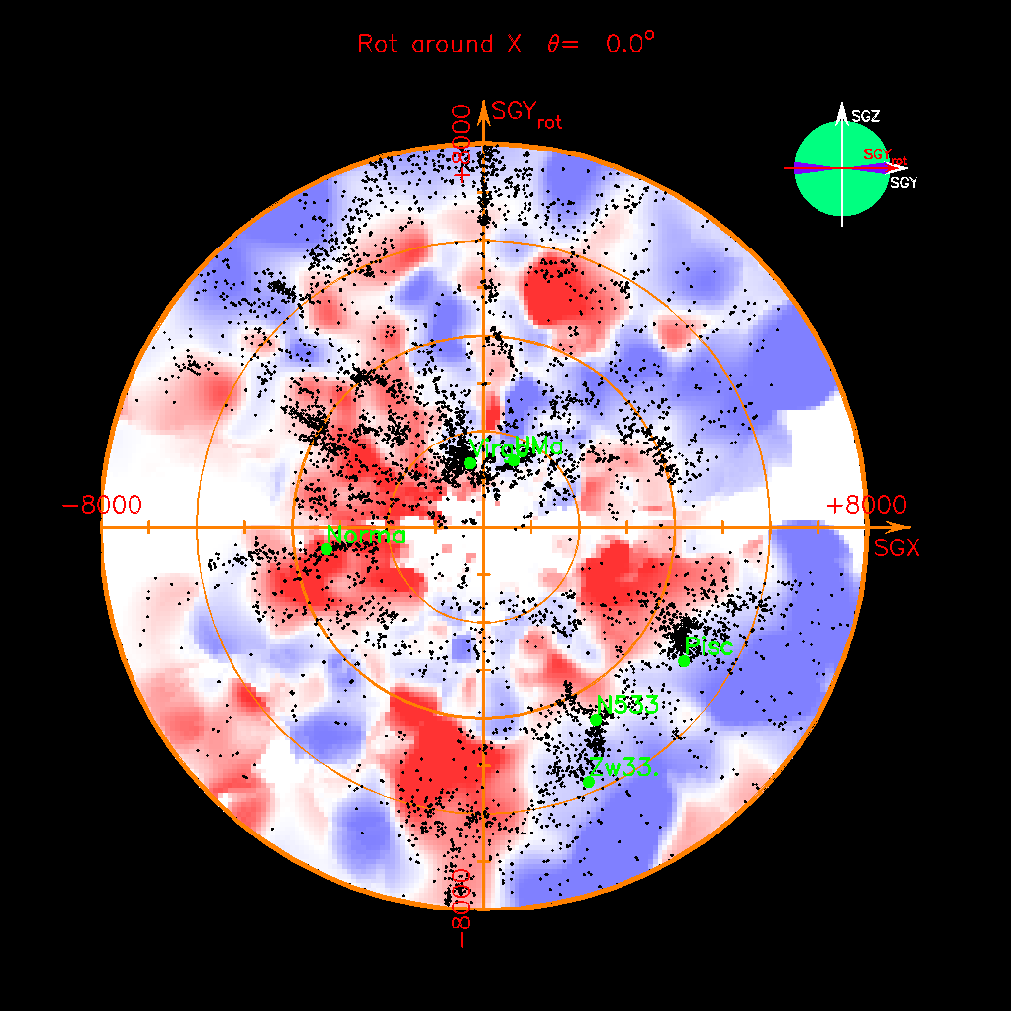
And then Tsagas appears with his cunning idea. He found that if you are moving relative to the stationary relic radiation, this relative movement leads to the fact that in your local region of space the speed of expansion differs from the total speed of expansion of the Universe!
This effect has the most effect on the nearby Universe, because when moving to ever larger scales, your peculiar speed, even if it is thousands of kilometers per second, will end up being negligible compared to the Hubble expansion.
Now let us recall that the model with the deceleration parameter q o ≈ -0.6 fits best to the data, although in the earliest times — when dark matter was not decisive — matter dominated in the Universe, and the deceleration parameter was q o ≈ + ½ .
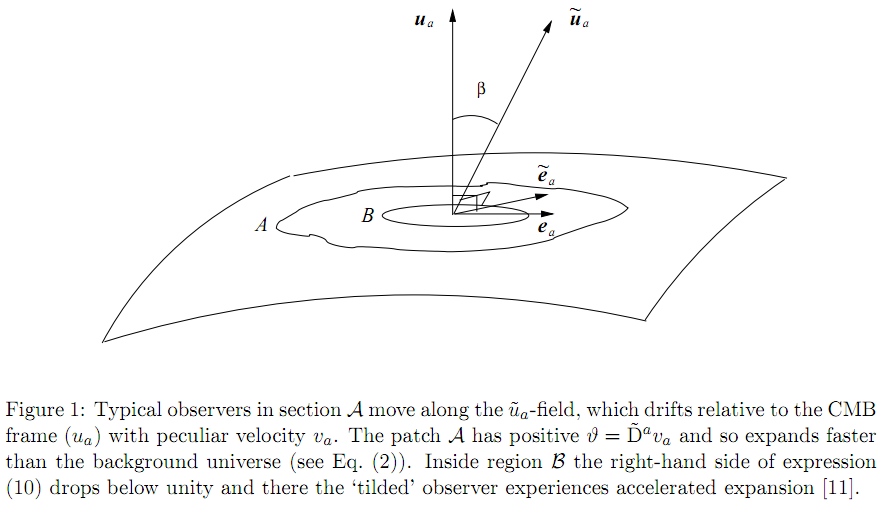
The main question is whether the Tsagas model can explain cosmological data on supernovae, which dark energy explains. And in his favor it is possible to attribute the fact that he honestly highlights his results and how they behave in comparison with conventional cosmology.
Answer: can not. His model produces a deceleration parameter of at least q o ≈ -0.3. And this parameter pretty quickly approaches zero, and then becomes small and positive (but much smaller than q o ≈ + ½, predicted by the standard ΛCDM model ) to z = 0.3. And it seems to me that this will be a big problem at intermediate redshifts that best support the dark energy model.
I took the best available data on supernovae, several models, including dark energy, an empty universe, and others ( from the Ned Wright website ), and tried to compare them with my calculations using the Tsagas model.
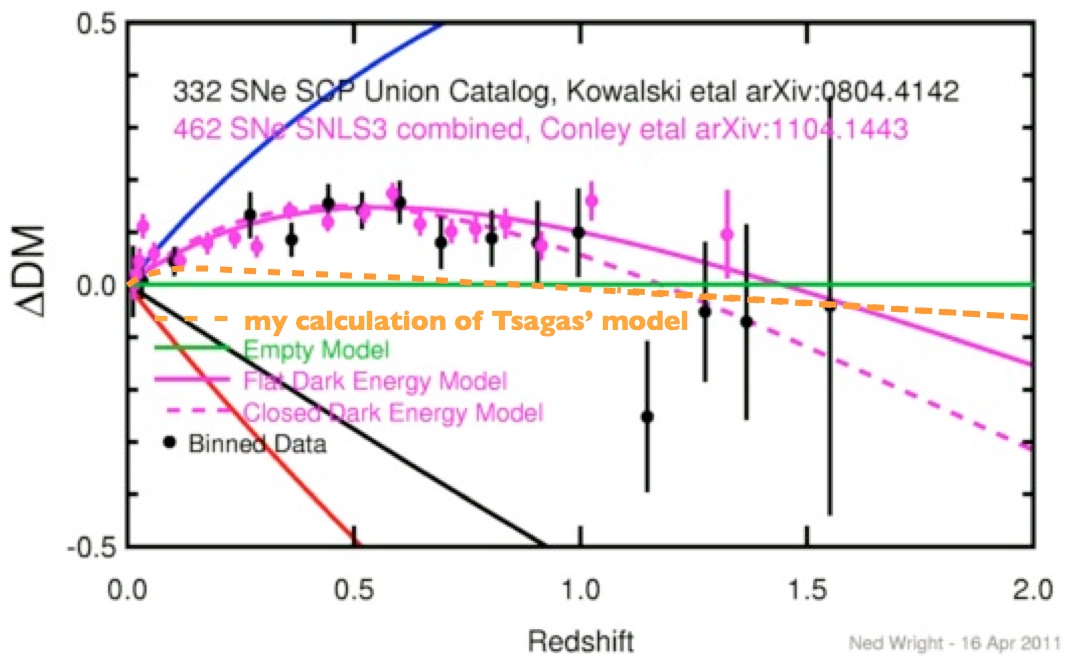
I exhibit excellent assessments of the Tsagas model for a pronounced, although insufficient, early rise of the curve, because it achieves this without any dark energy or negative pressure fields! But the low density of the Tsagas toy universe gives predictions that are too close to an “empty universe,” a model that does not correspond to the supernovae of the intermediate redshift.
So this is a fun toy, and its ability to deliver positive acceleration is impressive, but it is unlikely to replace dark energy. But it is always interesting for me to explore alternatives, and every time after that I am even more convinced of how impressive the confirmation of the theory of dark energy looks!
Source: https://habr.com/ru/post/372969/
All Articles